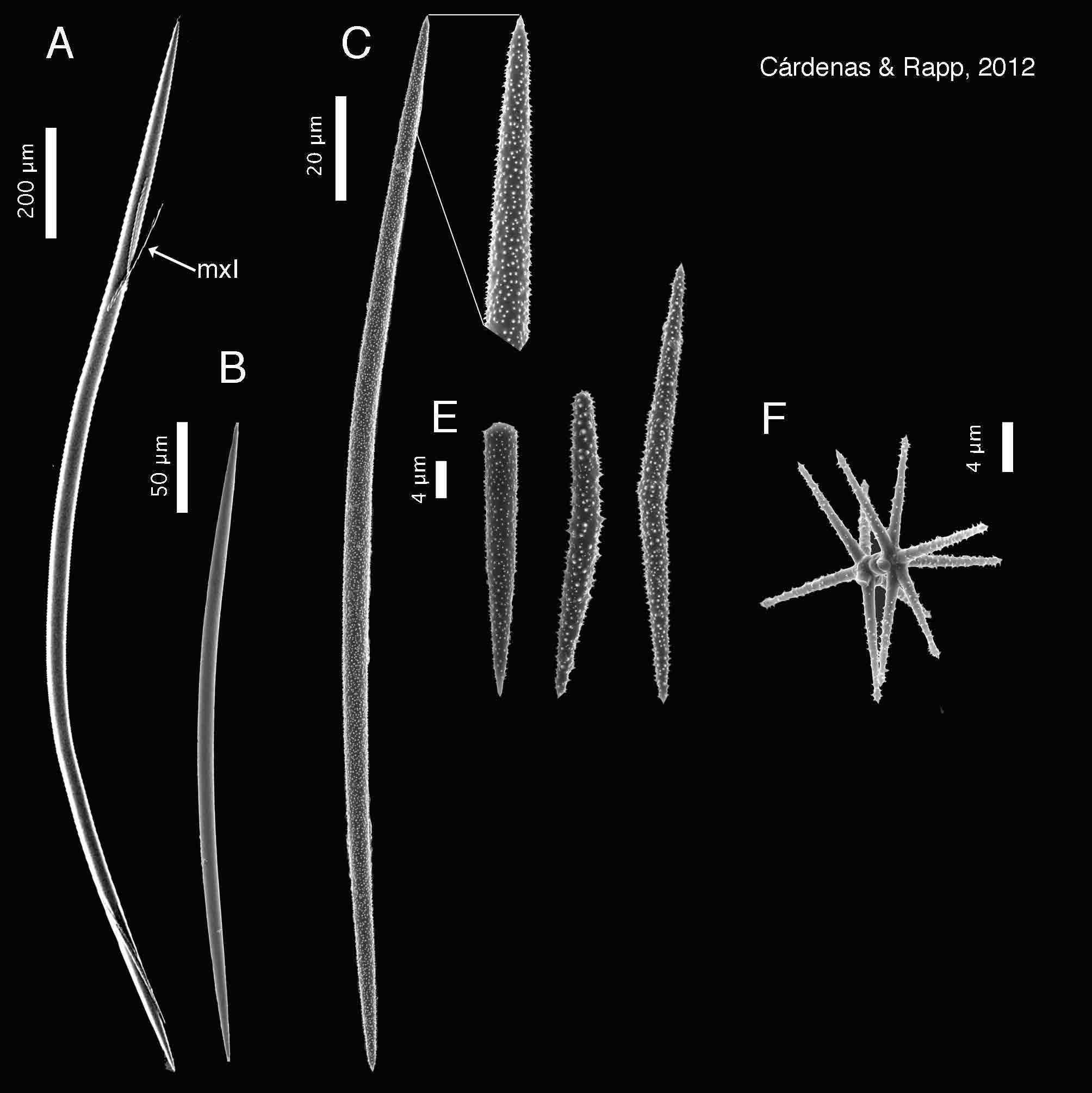Morphological description (show/hide)
| massive | | Surface and choanosome color in ethanol is cream | | not observed | | Surface is irregular, strongly hispid and dirty. | | Both orthotriaenes and dichotriaenes are present, more or less positioned radially with their cladomes tangential to the cortex. Amphiasters are commonly found in the cortex area but are also moderately present in the choanosome. Apart from the radial position of some triaenes, the arrangement of the spicules in the choanosome is confused. | | There is no real separated cortex, just a dense accumulation of paratangential microxeas II, reinforced by an underlying dense layer of paratangential microxeas I. | | (a) oxeas I, stout, most are curved (once or twice), length: 2184-1769-1210 μm; width: 20-37-52 μm. (b) oxeas II, foreign?, slightly curved, smooth, sometimes modified to a style, rare, length: 300-381.4-438 μm (N=21); width: 9-11.7-13 μm (N=21). (c) ortho- and dichotriaenes, some with deformities such as irregular or additional clads, rhabdome length: 168-408-630 μm; rhabdome width: 11-33-49 μm; clad length for orthotriaenes: 83-175-316 μm (N=18); clad length for dichotriaenes: 70-99-129 μm + 72-135-194 μm (N=12). (d) amphiaster, 9-14 actines, microspiny, length: 13-18-29 μm. | | (e) microxea I, in high numbers, microspiny, usually straight but sometimes curved, sometimes modified to a microstyle, length: 80-195-259 μm; width: 2-4.4-5 μm. (f) microxea II, faintly microspiny, straight or bent, often centrotylotes, sometimes modified to a microstyle or a microstrongyle, length: 24-35-49 μm; width: 2-2.6-4 μm. |
|
Reference (show/hide)
| Cárdenas, P., Xavier, J.R., Reveillaud, J., Schander, C. & Rapp, H.T. (2011) Molecular phylogeny of the Astrophorida (Porifera, Demospongiae) reveals an unexpected high level of spicule homoplasy. PLoS ONE, 6, e18318. doi:10.1371/journal.pone.0018318. |
|





